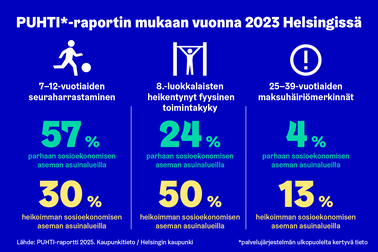
Child rights impact assessment is to become one of the City of Helsinki’s ex-ante evaluation methods for decision-making and a systematic tool for the creation of proposals from the perspective of children’s rights. Child rights impact assessment is one of the process stages when proposals are being drafted for committees or the City Council. Careful child rights impact assessment is a cornerstone of the UN’s Convention on the Rights of the Child and legally required for assessing the interests of children.
Early in the decision-making process, the matter at hand is evaluated from a children’s rights perspective and a decision is made whether the matter requires a more detailed and extensive ex ante child rights impact assessment.
Child rights impact assessment is required when the matter at hand has a significant impact on the well-being of children or child groups under 18 years of age. The purpose of this ex ante assessment is to identify the ways a proposal under preparation will impact the enforcement of the rights of the child as well as the well-being, health and everyday life of children and families with children, including the children’s learning. The ex ante assessment also enables the monitoring of the impact after decision-making. Child rights impact assessment can also provide information on the status of children and young people in different situations. It is important to pay particular attention to children and young people in vulnerable positions.
“I find it incredibly important that the City of Helsinki has created a joint child rights impact assessment model. It is fantastic that we, at Helsinki, can advance the National Child Strategy by strengthening child rights impact assessment in decision-making,” says Johanna Laisaari, Deputy Mayor for the Education Division.
Child rights impact assessment makes use of various types of data, such as statistics and research as well as existing expert or child information. What is key about child rights impact assessment is asking what the children think about matters that concern them. Methods to find out children’s opinions are already numerous, and a tool is being prepared to gather the opinions of children and young people.


